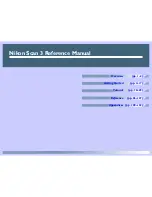
Partitions within Partitions — An Overview of Extended Partitions
267
26.1.3. Partitions within Partitions — An Overview of Extended
Partitions
Of course, over time it became obvious that four partitions would not be enough. As disk drives
continued to grow, it became more and more likely that a person could configure four reasonably-sized
partitions and still have disk space left over. There needed to be some way of creating more partitions.
Enter the extended partition. As you may have noticed in
Table 26.1, “Partition Types”
, there is an
"Extended" partition type. It is this partition type that is at the heart of extended partitions.
When a partition is created and its type is set to "Extended," an extended partition table is created.
In essence, the extended partition is like a disk drive in its own right — it has a partition table that
points to one or more partitions (now called
logical partitions
, as opposed to the four
primary partitions
)
contained entirely within the extended partition itself.
Figure 26.7, “Disk Drive With Extended Partition”
,
shows a disk drive with one primary partition and one extended partition containing two logical
partitions (along with some unpartitioned free space).
Figure 26.7. Disk Drive With Extended Partition
As this figure implies, there is a difference between primary and logical partitions — there can only
be four primary partitions, but there is no fixed limit to the number of logical partitions that can exist.
However, due to the way in which partitions are accessed in Linux, you should avoid defining more
than 12 logical partitions on a single disk drive.
Now that we have discussed partitions in general, let us review how to use this knowledge to install
Red Hat Enterprise Linux.
26.1.4. Making Room For Red Hat Enterprise Linux
The following list presents some possible scenarios you may face when attempting to repartition your
hard disk:
• Unpartitioned free space is available
• An unused partition is available
• Free space in an actively used partition is available
Let us look at each scenario in order.
Note
Keep in mind that the following illustrations are simplified in the interest of clarity and do
not reflect the exact partition layout that you encounter when actually installing Red Hat
Enterprise Linux.
Summary of Contents for ENTERPRISE LINUX 5 - VIRTUAL SERVER ADMINISTRATION
Page 12: ...xii ...
Page 20: ......
Page 30: ...12 ...
Page 32: ...14 ...
Page 82: ...64 ...
Page 106: ...88 ...
Page 122: ...104 ...
Page 124: ...106 ...
Page 126: ......
Page 132: ...114 ...
Page 168: ...150 ...
Page 182: ...164 ...
Page 192: ...174 ...
Page 194: ......
Page 236: ...218 ...
Page 238: ...220 ...
Page 270: ......
Page 274: ...256 ...
Page 278: ...260 ...
Page 292: ...274 ...
Page 294: ......
Page 300: ...282 ...
Page 304: ......
Page 316: ...298 ...
Page 370: ...352 ...
Page 384: ...366 ...
Page 385: ...Part VII Appendix ...
Page 386: ......
















































